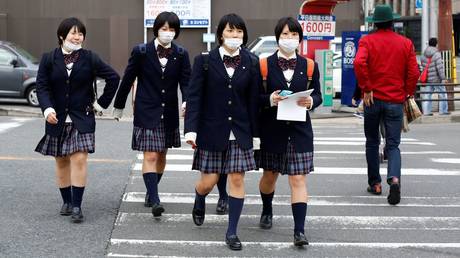
A Japanese study of the effectiveness of various types of face masks has shown that double-masking is not much different to a properly-worn surgical mask in preventing the spread of diseases like Covid-19.
“Wearing two masks does not make them twice as effective but only slightly more so,” Makoto Tsubokura, a professor of computational science at Kobe University, said as cited by the Asahi Shimbun newspaper. “Wearing one nonwoven mask is enough, and make sure it is put on properly without leaving a gap between the fabric and the nose.”
He was explaining the result of a study his team did together with the RIKEN Center for Computational Science using their Fugaku supercomputer. The computer modelling explored how various scenarios for wearing face masks fared in terms of trapping small droplets during coughing. The droplets are a vector for spreading many diseases, including Covid-19.
A urethane mask worn over a non-woven cover, like a common medical mask, meant to better seal the gaps trapped 89 percent of the droplets during the simulation. A loosely worn medical mask did the same for just 69 percent of the particles, but when fitted properly to the face with the nose wire its stopping power raised to 85 percent.
The discovery seems to somewhat undermine the rationale for double-masking, which led the US Center for Disease Prevention (CDC) to amend its guidelines last month and advise wearing a disposable medical mask under a cloth one to better prevent Covid-19 infections. A study published in the Mortality and Morbidity Weekly Report in February suggested virus exposure may be reduced by as much as 95.9 percent if both the coughing person and the recipient wear two masks.
Tsubokura noted though that a comprehensive approach, which includes washing hands, wearing face masks, ventilation, social distancing and other measures is necessary for effective prevention of airborne diseases.
The Fugaku supercomputer was earlier used by the same team of researchers to determine how effective face shields are in stopping aerosols. Simulations found them virtually useless.
If you like this story, share it with a friend!




